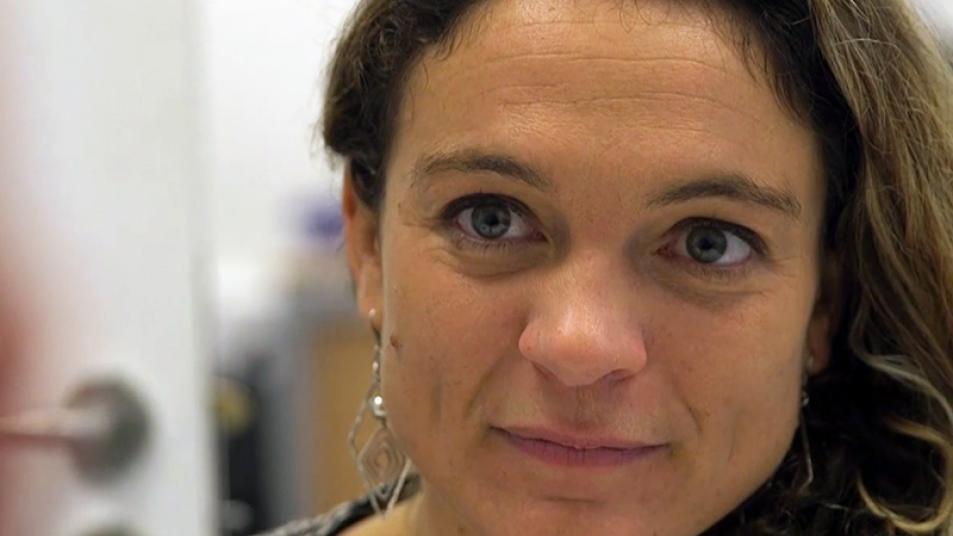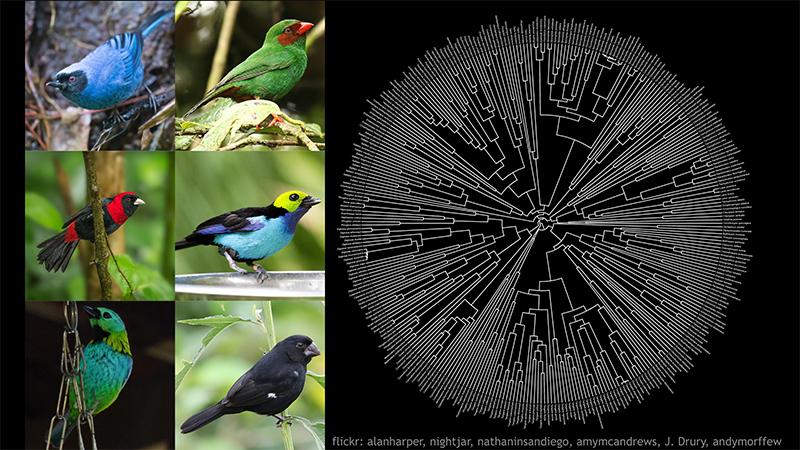
News
"We can only understand the world around us as a whole"
Published on
22 September 2021
, updated on
22 September 2021
Image

Hélène Morlon is a research director at the CNRS and head of the Biodiversity Modeling team at the Institute of Biology of the ENS-PSL (IBENS). The objective of her work? To better understand how past environmental changes have influenced biodiversity and vice versa, in order to understand current environmental changes. This innovative research, at the crossroads of mathematics and biology, has earned her the prestigious CNRS silver medal in 2021.
Hélène Morlon is a research director at the CNRS and head of the Biodiversity Modeling team at the Institute of Biology of the ENS-PSL (IBENS). For a long time, she hesitated between training in mathematics and biology, and now juggles the two disciplines on a daily basis.
Understanding the past to anticipate the future
Her research team is particularly interested in three processes that influence the diversity of living species on our planet: speciation, i.e. the formation of new species, extinction and the evolution of phenotypes, which encompass all observable traits of organisms such as body size or morphology. "The speed at which these processes took place in the past, or "evolutionary rates", play a key role in both past variations in diversity and in its current levels," explains Hélène Morlon. "The particularity of our research is to develop probabilistic models that allow us to estimate these evolutionary rates from current data.
For example, the study of the DNA of current species allows us to reconstruct the sequence of speciation events that have taken place since the common ancestor of these species. Their phenotypes and current distributions allow the reconstruction of the ancestral phenotypes and distributions. A real step back in time in the history of biodiversity, applied by scientists to many species: "We apply our models to a variety of organisms, ranging from terrestrial vertebrates such as mammals and birds to marine plankton, studied by the scientific expedition Tara Oceans, and even to the intestinal microbiota," explains the researcher.
Image

Within the Biodiversity Modeling team, Hélène Morlon is a specialist in a particular branch of evolutionary biology, macroevolution. This field of study focuses on the evolutionary history of groups of species over long periods of time. For example, the evolutionary history of mammals during the Cenozoic, i.e. during the last 65 million years, or the great evolutionary radiations, i.e. the rapid diversification of species and their ecological traits. "Historically, this research has been carried out by paleontologists working on the fossil record," explains Hélène Morlon. "The 'neontological' approach that I am leading, which consists of studying these questions from current data, has existed for about thirty years.
The stakes of this recent approach are high: scientists are working on the most efficient data collection and analysis tools possible, which combine fossil elements and information on current species. This research allows us to progressively understand how past environmental changes have influenced biodiversity, and vice versa. It is also central to understanding and anticipating the environmental changes of our time.
Image

Bringing together two passions
Recently awarded the CNRS Talents Silver Medal, Hélène Morlon is a passionate scientist: "Research in evolutionary ecology is simply fascinating! And above all, it satisfies both my taste for the conceptual and theoretical formalization of mathematics and my enthusiasm for the natural world. For if Hélène Morlon has succeeded in bringing together her two passions in her work, it has not always been so simple. For a long time, the scientist hesitated between training in mathematics and biology: "At the time, I didn't know that you could do both," she recalls. For those who are considering a scientific career, as she likes to say, it is important to "think carefully about the first research internships and the thesis, to think about it early on, and not to hesitate to get advice from teachers, tutors and others. Choices that can be "difficult" but are "crucial" for the rest of one's career, warns the researcher, who has experienced a change of direction during her career.
Originally from the south of France, Hélène Morlon began her studies with two years of Math-Sup / Math-Spé preparatory classes at the Lycée Thiers in Marseille. She studied at the ENS in Cachan and prepared for the agrégation in mathematics, which she passed in 2000. "It was then that I branched off into ecology," she explains. "In the preparation course for the agrégation, there was a module on the application of mathematics to other disciplines and, among other things, there was a course on adaptive dynamics taught by Régis Ferrière, who is a professor at the ENS and team leader at IBENS.
The researcher then began to see the possibilities of mathematical applications to the life sciences. She therefore branched off into a DEA (now a Master's degree) in inter-institutional ecology, which at the time involved Paris VI, the ENS, and the Museum of Natural History. "This course in adaptive dynamics and the year of the DEA in ecology that followed were decisive for me," admits the scientist. "At the beginning, my research was more oriented towards ecology and environmental sciences, because of my concern for the environment. The evolutionary aspect took an increasing part later."
"The world around us is neither biological, nor chemical, nor physical, nor economic and social, but all at once."
Although Hélène Morlon obtained her PhD in environmental sciences in 2005, it was during her post-doctoral studies in the United States that she developed her current research themes on biodiversity modeling. She did two post-doctoral fellowships at four universities, first with Jessica Green at UC Merced and the University of Oregon, then with Joshua Plotkin and Matthew Potts at UPenn (Philadelphia) and UC Berkeley. Upon her return to Europe in 2010, she joined the CNRS and the Centre de Mathématiques Appliquées of the École Polytechnique.
It was in 2014 that she had the opportunity to set up her own research group by winning a "new teams" call for proposals at the ENS Institute of Biology. Since then, the researcher became a research director in 2017. "I am lucky to have a very good working environment, incredibly talented students, and brilliant colleagues to collaborate with, such as Amaury Lambert with whom I have been working since I started at ENS and Chris Bowler who embarked me on the Tara Oceans adventure," Hélène Morlon testifies with gratitude.
The researcher is also happy to see interdisciplinarity encouraged, an aspect of research that is particularly dear to her heart, as a mathematician and biologist: "the world around us is neither biological, nor chemical, nor physical, nor economic and social, but all of these at the same time; we can only understand it as a whole. We can only understand it as a whole. And mathematics is a formidable tool for understanding it," she says. "Today's scientist is often very specialized in order to be at the forefront of his or her field. We must therefore work as a team, with a culture of interdisciplinarity," concludes the researcher.



Be the first to review this item, please login or register.
Sign-in Register